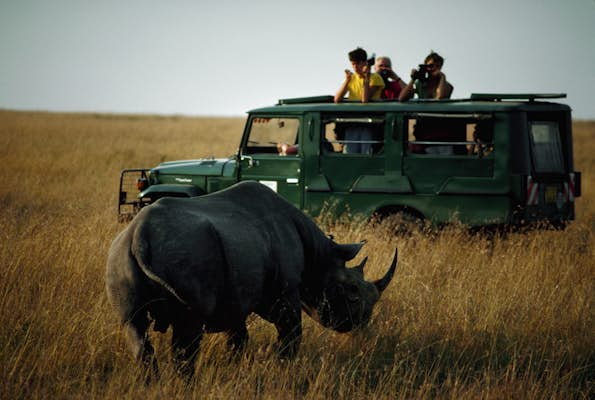Under threat of extinction and a testament to the resilience of wild creatures in wild places, the African rhino is an enduring symbol of the beautiful strangeness of the natural world.
If you see this member of the Big Five in the wilds of Africa, you’ve hit the safari jackpot.
In celebration of World Rhino Day on September 22, 2022, we’ll show you how to make it happen.

Rhinos: a picture painted in black and white
When it comes to land animals, only elephants are bigger than rhinos. Rhinos have very few natural enemies, apart from humankind, and they’re so large that no other predator can bring down an adult rhino; lions and other large predators do occasionally kill baby rhinos.
There are two main species of African rhinoceros, black and white, although the names are something of a misnomer. Rhinos aren’t named for their color, but for their lip shape: ‘white’ comes from wijde (wide), the Boers’ term for the fatter-lipped white rhino.
Safari animals: the story of lions (and the best places to see them)
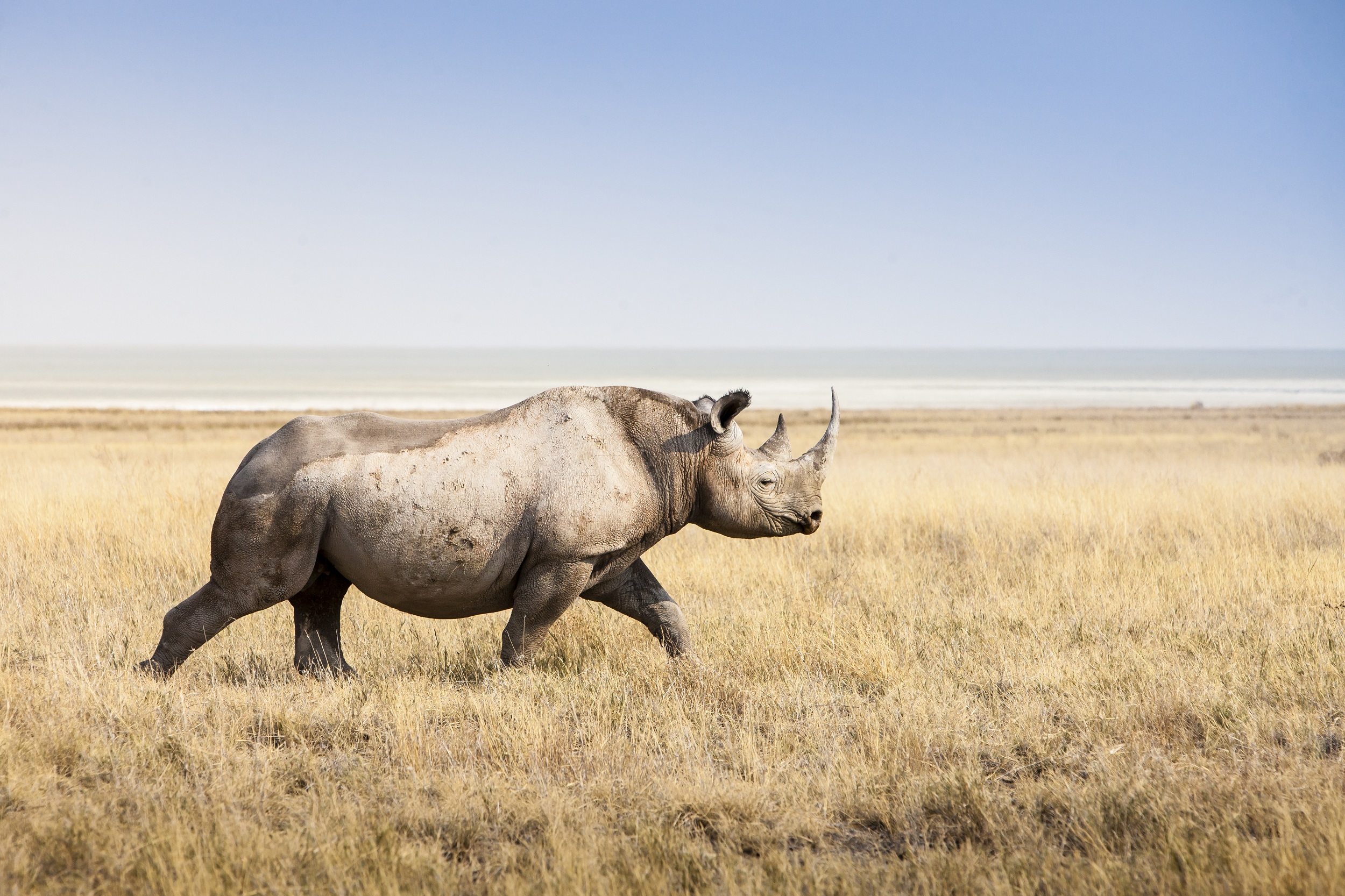
Black rhinos are smaller than white rhinos, but adult black rhinos still clock in at anywhere between 700kg and 1400kg. Black rhinos are browsers – they eat leaves, twigs and branches – which means that they’re most often found in thickets and woodlands. The considerably larger white rhino can weigh up to 3600kg and is a grazer, preferring short grasses on the savannah plains.
Rhino mothers give birth after pregnancies of around 15 or 16 months, and baby rhinos will survive off its mother’s milk for up to a year after birth. In the wild, rhinos can live for up to 50 years if allowed to do so.
A day on safari in Africa: what you can expect in camp and in the wild
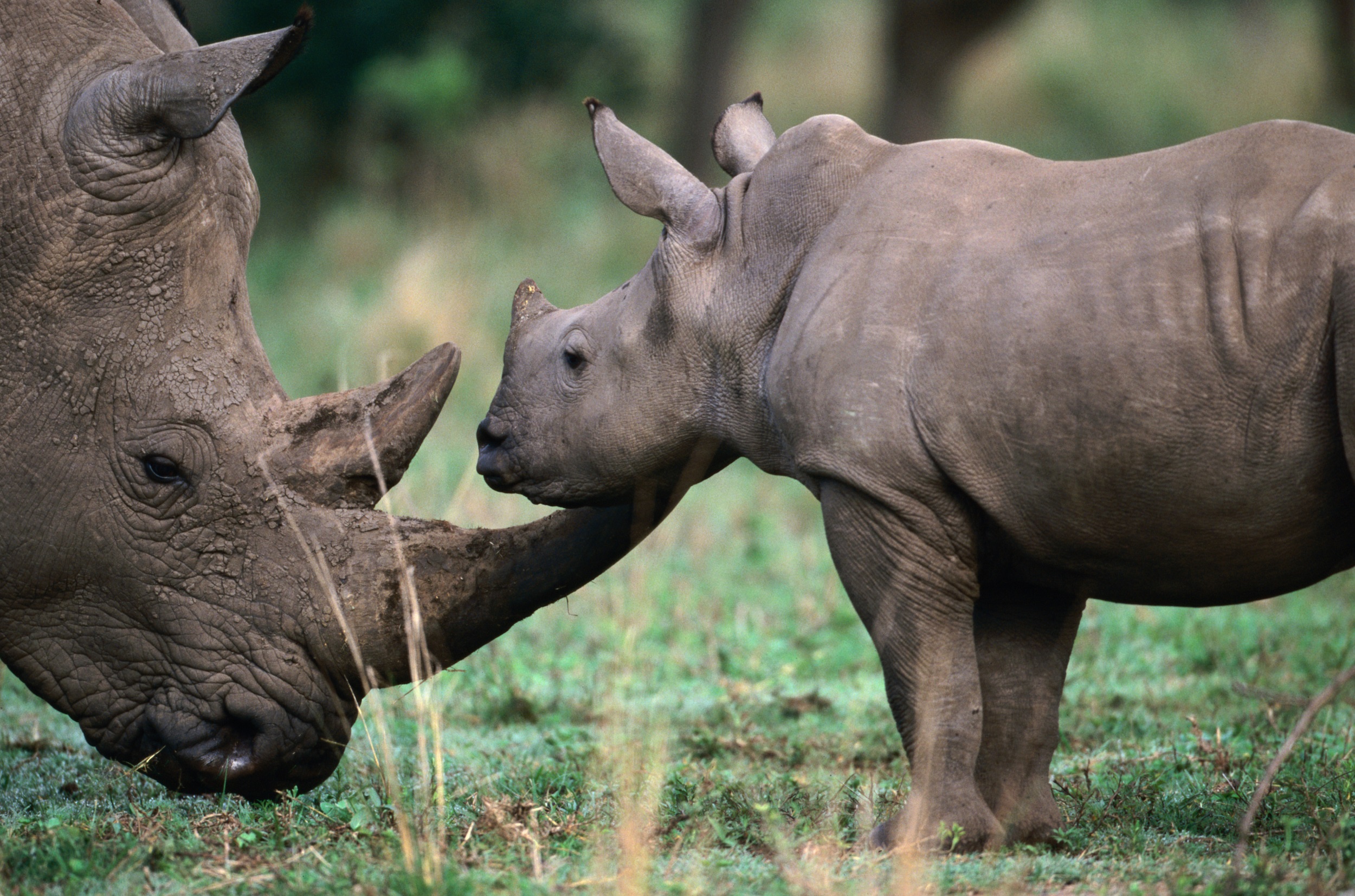
A social life
Although rhinos do inhabit set territories, aggression between rhinos is rare in areas where rhino density is high; breeding males will, however, attack competitors. In Namibia’s Etosha National Park, rhinos often commune with other rhinos at waterholes after dark. Female rhinos frequently live in close proximity to other females, but the mother and her young is the core foundation of most rhino families. That is until the mothers drive off their offspring when they become independent at around two to four years old, which enables the mother to breed again.
The elephants of Africa: a complete guide to the best places to see them in the wild
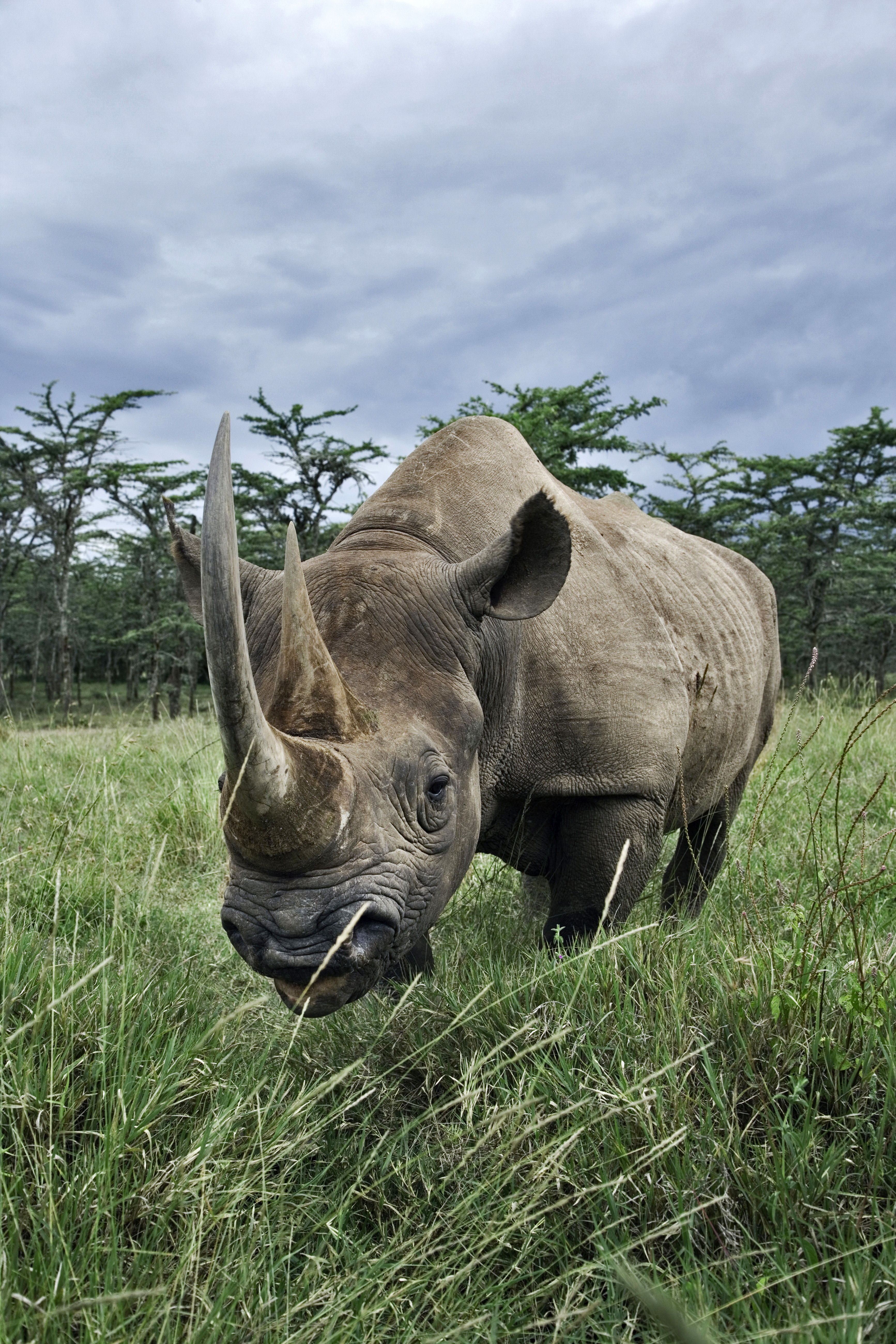
A rhino’s horn
The horn of a rhino is made not from bone but from keratin, a protein found in our hair and fingernails. A lucrative prize for poachers over the past century, the horn owes its current value to its use in traditional Asian medicines, including as an aphrodisiac, although its legend dates back much further. In ancient Greece, rhino horn was believed to purify water, while the ancient Persians believed it could detect poisons. In the centuries since it has been used to make the handles of daggers in Yemen, and everything from walking sticks and door handles to the interior of limousines elsewhere.
According to the latest estimates, a single rhino horn can sell for up to US$65,000 on the black market in parts of Asia, although that figure has reached US$300,000 at times over recent years.
Where you should go on your first safari in Africa
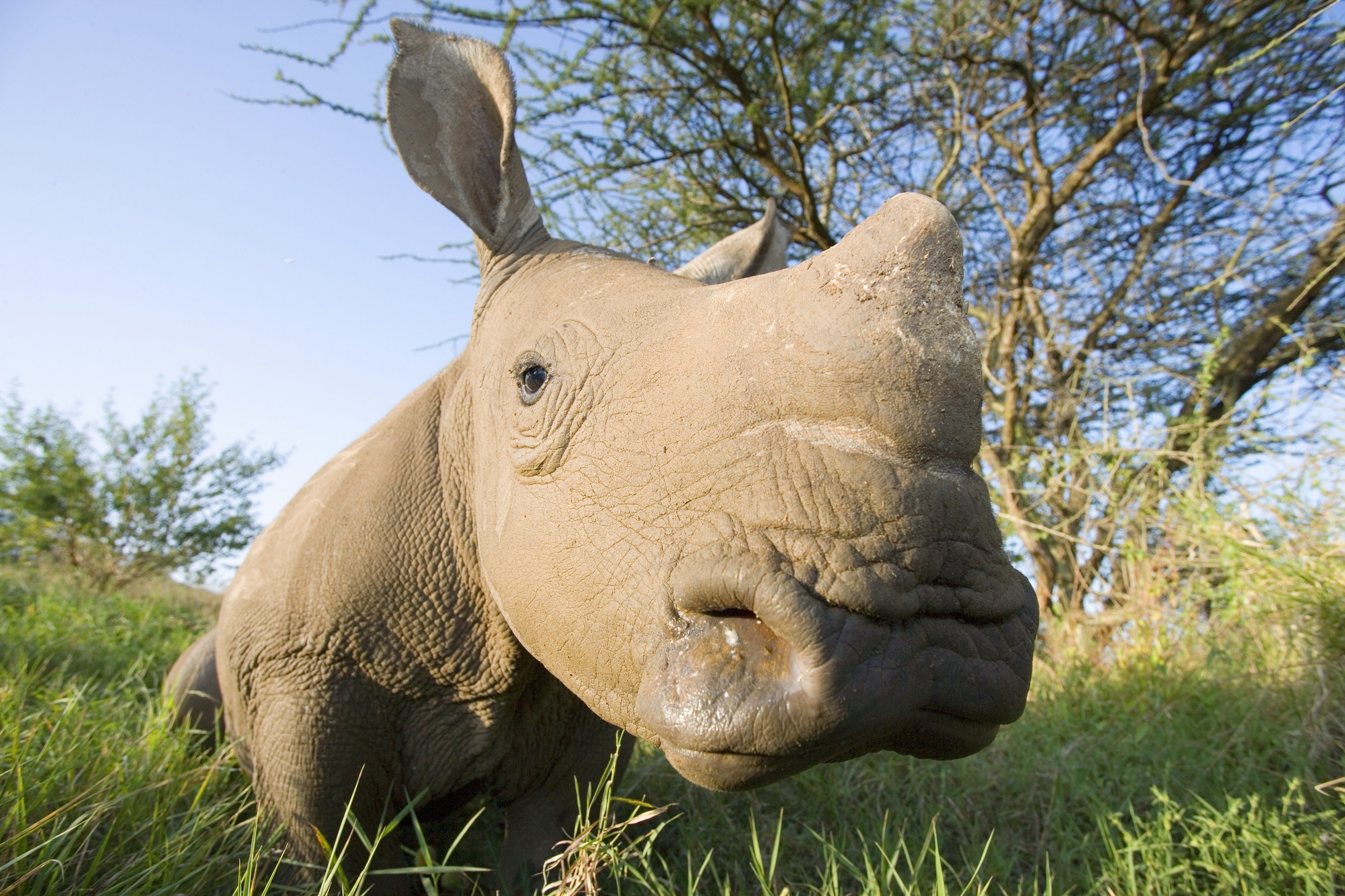
The best places to see rhinos on safari
Rhinos were once found across Africa, even deep in what we now know as the Sahara Desert. These days, Southern Africa and East Africa are the last strongholds of the rhino, and intensive conservation efforts have seen the species return to many lands where it was wiped out in the 20th century.
Top tips to make your African safari more affordable
South Africa
Given that South Africa is home to 90% of all white rhinos, this is where you should start your search for the species. Sightings are extremely common in Kruger National Park and the surrounding reserves. Other good possibilities include Hluhluwe-iMfolozi Park and Madikwe Game Reserve, as well as numerous private reserves.
Namibia
The waterholes of Etosha National Park in Namibia are excellent for black rhino sightings, especially after dark. Damaraland is a remote but terrific alternative.
Kenya
Kenya has more black rhinos than any other country and your best bet is up on the Laikipia Plateau, including Ol Pejeta Conservancy and Lewa Wildlife Conservancy, both of which have black and white rhinos. Other good places include Nairobi National Park, as well as the national parks of Tsavo West, Meru, Aberdare and Lake Nakuru.
Tanzania
The main crater in Ngorongoro Conservation Area has Tanzania’s densest population of black rhinos. There’s also a handful in Serengeti National Park.
Botswana
Although rhinos have been reintroduced into the Okavango Delta, sightings are rare. Try Khama Rhino Sanctuary, northwest of Gaborone.
Zambia
Try North Luangwa National Park in Zambia for black rhinos.
Zimbabwe
Matobo National Park in Zimbabwe is a rare opportunity in southern Africa to see both white and black rhinos.
eSwatini (formerly Swaziland)
Stunning Mkhaya Game Reserve in eSwatini has impressive black and white rhino populations.

Are Rhinos in peril?
The story of the white rhino is one of conservation’s greatest success stories. Conservationists believe that fewer than 100 white rhinos may have been left in the wild early in the 20th century. Official estimates place the current number at between 17,212 and 18,915. South Africa is home to the vast majority of surviving southern white rhinos. The species’ recovery has been so successful that the white rhino is now listed only as Near Threatened.
Sadly, the northern white rhino subspecies is on the brink of extinction. Only two females survive, at Ol Pejeta Conservancy in Kenya. The last male, Sudan, died in March 2018.
Are you ready for a self-drive safari in Africa?
The black rhino has also made a dramatic recovery, although not quite to the same extent as the white rhino. Some scientists believe that there were 600,000 black rhinos in the wild in 1900, and as many as 70,000 remained in 1970. In 1995, there were just 2410 still alive. Intensive conservation measures have seen a slow but steady recovery to a continent-wide population of between 5366 and 5627 individuals. The species remains Critically Endangered.
In early 2014 Namibia caused international controversy when it auctioned off a hunting license for a black rhino with a promise that the revenues raised would be channeled back into rhino conservation and anti-poaching measures. The winning bidder paid US$350,000 to hunt the animal, although the government claimed that critics of its policy caused an earlier bid of US$1 million to be withdrawn due to negative publicity. The government also argued that the rhino in question, an older and aggressive bull male, was past breeding age and was considered a serious threat to other rhinos.
